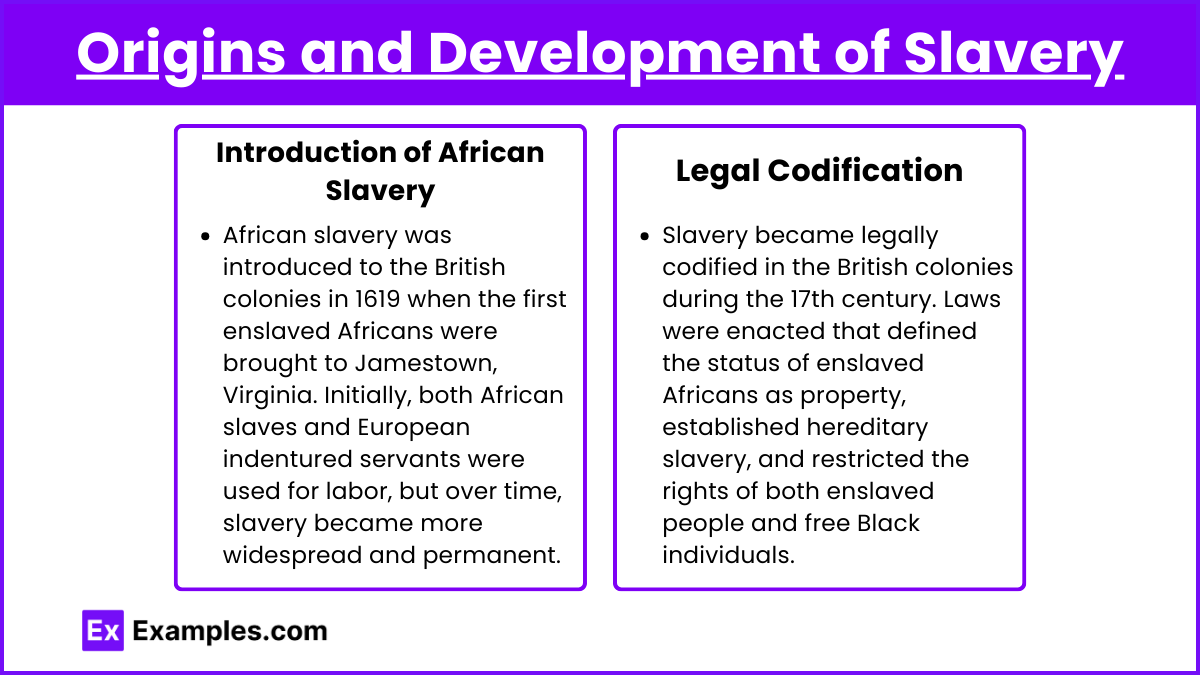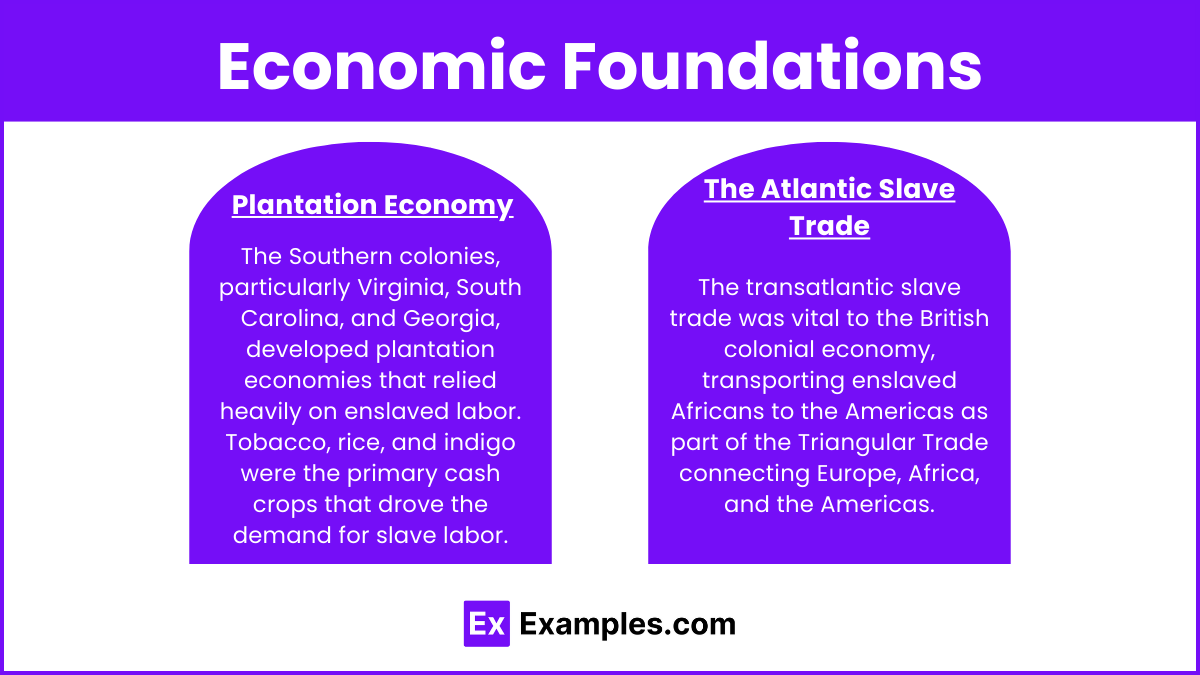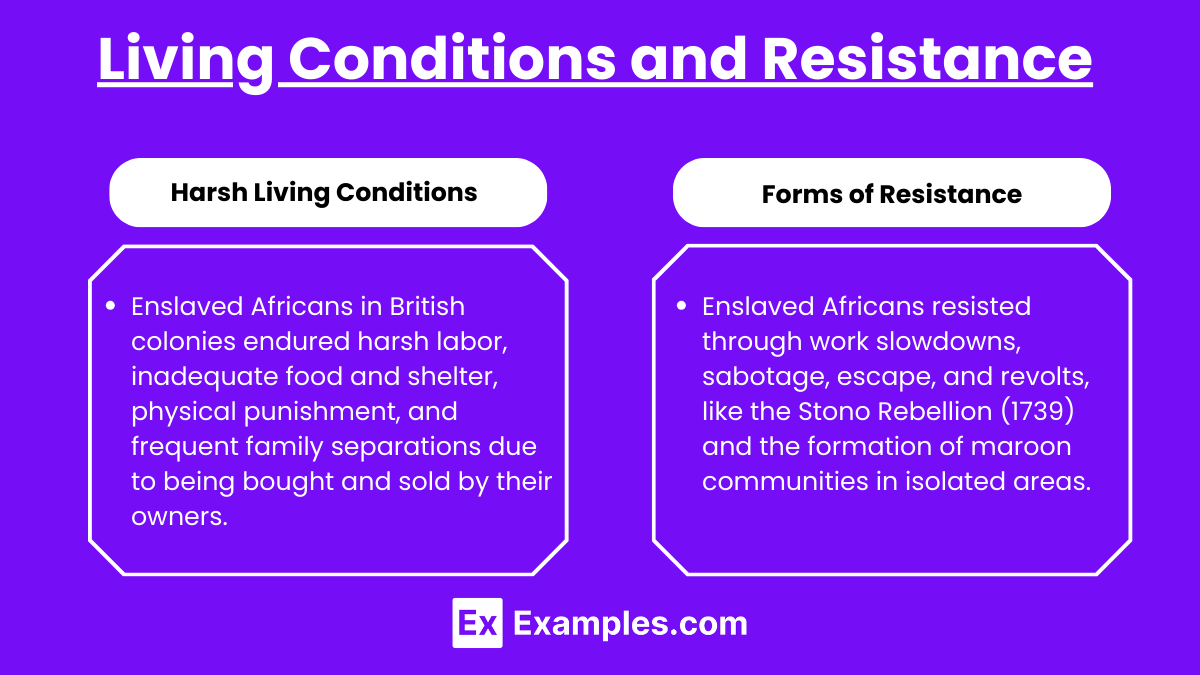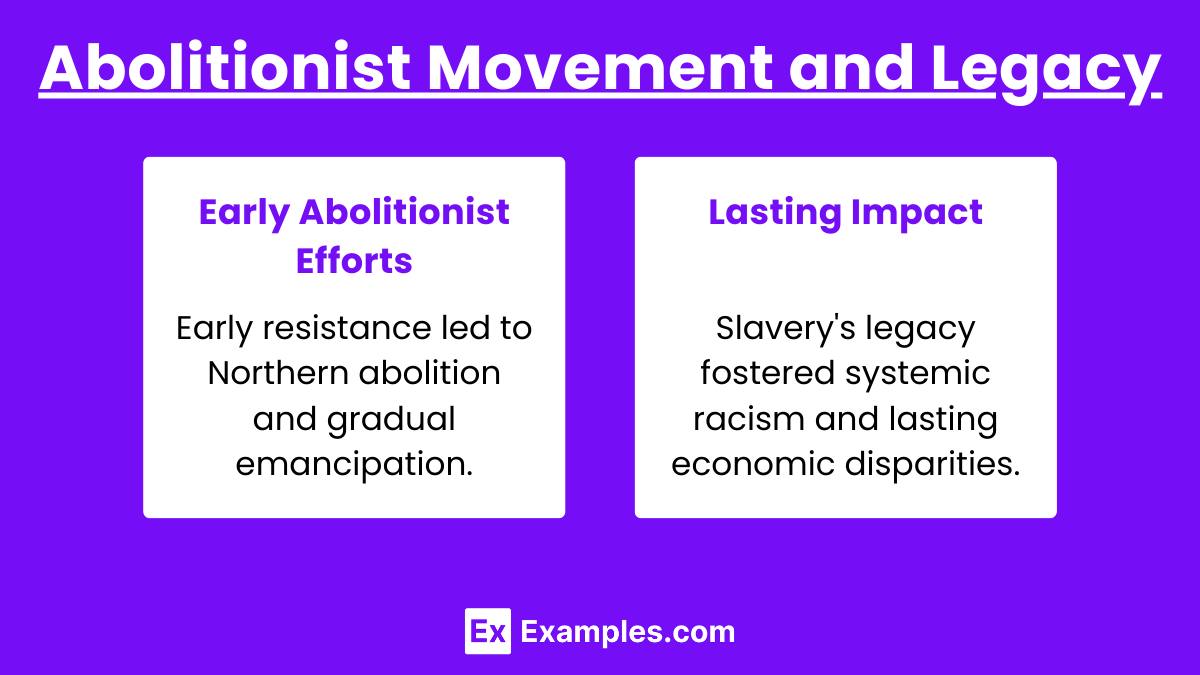In AP United States History, the study of slavery in the British colonies is essential for understanding the economic, social, and political foundations of early America. Slavery became a central institution, particularly in the Southern colonies, where the demand for labor-intensive cash crops like tobacco and rice fueled the expansion of the transatlantic slave trade. Over time, slavery became deeply entrenched, leading to the development of a rigid racial hierarchy and having lasting impacts on American society and culture.
Free AP United States History Practice Test
Learning Objectives
In studying slavery in the British colonies, you will be introduced to the origins and development of the institution of slavery, including its legal codification and economic foundations. The brutal conditions faced by enslaved Africans and their resistance to enslavement will be explored. You will examine the social and cultural impact of slavery, including the development of a racial hierarchy and cultural preservation by enslaved people. The lasting legacy of slavery on American society will also be analyzed.
Origins and Development of Slavery

Introduction of African Slavery: African slavery was introduced to the British colonies in 1619 when the first enslaved Africans were brought to Jamestown, Virginia. Initially, both African slaves and European indentured servants were used for labor, but over time, slavery became more widespread and permanent.
Legal Codification: Slavery became legally codified in the British colonies during the 17th century. Laws were enacted that defined the status of enslaved Africans as property, established hereditary slavery, and restricted the rights of both enslaved people and free Black individuals.
Economic Foundations

Plantation Economy: The Southern colonies, particularly Virginia, South Carolina, and Georgia, developed plantation economies that relied heavily on enslaved labor. Tobacco, rice, and indigo were the primary cash crops that drove the demand for slave labor.
The Atlantic Slave Trade: The transatlantic slave trade was integral to the British colonial economy. Ships transported enslaved Africans from West Africa to the Americas, where they were sold at auction. The trade was part of the larger Triangular Trade system, which connected Europe, Africa, and the Americas.
Living Conditions and Resistance

Harsh Living Conditions: Enslaved Africans in the British colonies faced brutal conditions, including long hours of labor, inadequate food and shelter, and physical punishment. Family separations were common, as enslaved people were bought and sold at the discretion of their owners.
Forms of Resistance: Enslaved Africans resisted their conditions in various ways, including work slowdowns, sabotage, escape, and revolts. Notable examples include the Stono Rebellion in South Carolina (1739), where enslaved people attempted to escape to Spanish Florida, and the establishment of maroon communities by escaped slaves in remote areas.
Social and Cultural Impact

Development of a Racial Hierarchy: The institution of slavery led to the development of a rigid racial hierarchy in the British colonies. White colonists held political, economic, and social power, while enslaved Africans and their descendants were subjected to systematic oppression and discrimination.
Cultural Preservation and Adaptation: Despite the oppressive conditions, enslaved Africans preserved and adapted their cultural traditions, including music, religion, and language. African cultural influences became a significant part of the broader American culture, particularly in the South.
Abolitionist Movement and Legacy

Early Abolitionist Efforts: Resistance to slavery began early, with Quakers and other religious groups advocating for abolition. By the late 18th century, the movement gained momentum in the Northern colonies, leading to the gradual emancipation of enslaved people in those regions.
Lasting Impact: The legacy of slavery in the British colonies persisted long after its abolition. The institution of slavery laid the groundwork for systemic racism and economic disparities that continued to shape American society throughout its history.
Examples
Examples : 1
Jamestown (1619): The first arrival of enslaved Africans in the British colonies occurred in Jamestown, Virginia, marking the beginning of the transatlantic slave trade in North America.
Examples : 2
Bacon’s Rebellion (1676): This rebellion in Virginia highlighted tensions between poor whites and wealthy landowners. In its aftermath, the shift towards a race-based system of slavery accelerated as a means to prevent future alliances between poor whites and enslaved Africans.
Examples : 3
The Stono Rebellion (1739): One of the largest slave uprisings in the British colonies, occurring in South Carolina. The rebellion was brutally suppressed, leading to stricter slave codes and harsher treatment of enslaved people.
Examples : 4
The Barbados Slave Code (1661): This code served as a model for slave laws in the British colonies. It legalized harsh punishments for enslaved people and established racial distinctions between Africans and Europeans, reinforcing the racial hierarchy.
Examples : 5
The Middle Passage: The journey of enslaved Africans across the Atlantic to the Americas. The Middle Passage was notorious for its inhumane conditions, with high mortality rates due to disease, overcrowding, and abuse.
Multiple Choice Questions (MCQs)
What was a significant consequence of Bacon’s Rebellion (1676) in Virginia?
A. The abolition of slavery in the colony
B. The strengthening of indentured servitude
C. The shift towards a race-based system of slavery
D. The end of tobacco farming
Answer: C
Explanation: After Bacon’s Rebellion, Virginia planters increasingly turned to African slavery as a labor source to prevent future alliances between poor whites and enslaved Africans, leading to the establishment of a race-based system of slavery.
What was the primary economic driver for the widespread use of slavery in the Southern British colonies?
A. Mining
B. Plantation agriculture
C. Manufacturing
D. Fishing
Answer: B
Explanation: Plantation agriculture, particularly the cultivation of tobacco, rice, and indigo, was the primary economic driver for the widespread use of slavery in the Southern British colonies.
Which of the following was a key characteristic of the Barbados Slave Code of 1661?
A. It granted enslaved people the right to own property.
B. It established legal distinctions based on race.
C. It provided for the gradual emancipation of slaves.
D. It allowed slaves to vote in local elections.
Answer: B
Explanation: The Barbados Slave Code of 1661 established harsh punishments for enslaved people and created legal distinctions based on race, reinforcing the racial hierarchy in the British colonies.

